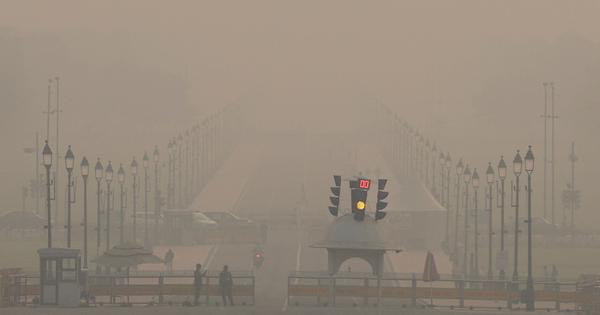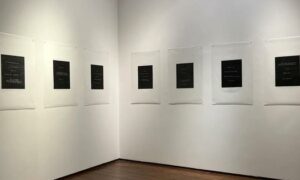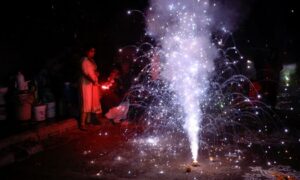
The air quality in Delhi remained in the “very poor” category for the third consecutive day on Thursday.
The average Air Quality Index at 4.06 pm was 305, according to data from the Sameer application, which provides hourly updates published by the Central Pollution Control Board.
The AQI in Anand Vihar was the worst at 410, categorised as “severe”.
An index value between 0 and 50 indicates “good” air quality, between 51 and 100 indicates “satisfactory” air quality and between 101 and 200 indicates “moderate” air quality. As the index value increases further, air quality deteriorates. A value of 201 and 300 means “poor” air quality, while between 301 and 400 indicates “very poor” air.
Between 401 and 450 indicates “severe” air pollution, while anything above the 450 threshold is termed “severe plus”.
#WATCH | The Air Quality Index (AQI) around Anand Vihar area recorded at 428, in the ‘Severe’ category, in Delhi this morning as per the Central Pollution Control Board (CPCB).
Latest visuals from the area. pic.twitter.com/xTgnAaoJAO
— ANI (@ANI) October 23, 2025
Air quality deteriorates sharply in the winter months in Delhi, which is often ranked the world’s most polluted capital. Stubble burning in Punjab and Haryana, along with the lighting of firecrackers, vehicular pollution, falling temperatures, decreased wind speeds and emissions from industries and coal-fired plants contribute to the problem.
On October 15, the Supreme Court permitted the sale and use of green firecrackers in the Delhi-National Capital Region, subject to conditions.
The bench allowed the sale between October 18 and October 21 in designated locations, and limited the use of firecrackers from 6 am to 7 am and between 8 pm and 10 pm.
Green firecrackers are considered less polluting than regular ones as they are made with modified formulations and do not contain harmful elements such as lithium, arsenic, barium and lead.
Despite the restrictions, several residents lit crackers outside this period.
On Tuesday, the day after Diwali, the PM2.5 concentration in Delhi at 4 pm was 351 micrograms per cubic metre, according to the Central Pollution Control Board. This was 23.4 times the World Health Organization’s permissible limit of 15 micrograms per cubic meter for a 24-hour period.
PM2.5 refers to respirable airborne particulate matter not more than 0.0025 mm in width.
The average AQI in the national capital on Wednesday was 353.
To curb the rising air pollution in Delhi and the adjoining areas in the National Capital Region, the Commission for Air Quality Management had on Sunday imposed Stage 2 restrictions under the Graded Response Action Plan.
The Graded Response Action Plan is a set of incremental anti-pollution measures that are triggered to prevent further worsening of air quality once it reaches a certain threshold in the Delhi-NCR region.
The second stage of the plan involves a ban on the use of coal and firewood, including tandoors in hotels, restaurants and open eateries. It also includes a ban on the use of diesel generator sets, except for emergency and essential services.
It further comprises measures such as the mechanical sweeping of roads and sprinkling water on them to keep the dust from rising, and intensified inspections for strict dust control measures at construction and demolition sites.
The restrictions under Stage 2 include the curbs under the first stage, which was imposed on October 14.
Also read: Delhi’s failure to act against the biggest source of its air pollution – vehicles
📰 Crime Today News is proudly sponsored by DRYFRUIT & CO – A Brand by eFabby Global LLC
Design & Developed by Yes Mom Hosting






